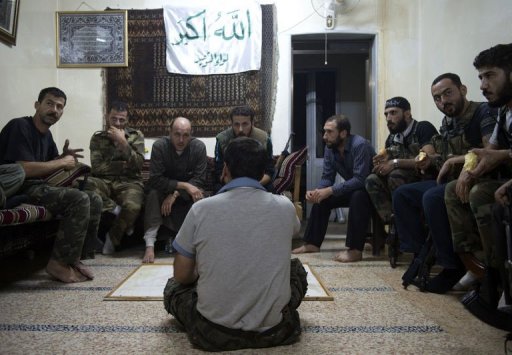Since its inception during the Soviet era, the Northern Fleet has given Russia one thing it has historically lacked; unhindered access to the North Atlantic. Because of its key location, both providing access to the North Atlantic and being at the western terminus of the Northern Sea Route, the Northern Fleet has seen substantial investment from Moscow towards its modernization.

Part of the modernization of the Northern Fleet has been through the introduction of two of the new Borey-class submarines, the Yuri Dolgoruky (in service) and the Vladimir Monomakh (just completed sea trials). The third Borey submarine, the Alexandr Nevsky, is still undergoing sea trials and is not included as part of the Northern Fleet. The Alexandr Nevsky and the Vladimir Monomakh may be deployed to the Pacific Fleet, so the inclusion of their numbers in the Arctic nuclear arsenal is unlikely. The Borey-class submarines, with a full compliment of weapons, will carry 16 of the new Bulava missiles, with each missile holding 6 nuclear warheads. This means, that in one submarine, the Russians have 96 nuclear warheads available for use, and if both submarines were fully armed, there would be 32 missiles with 192 nuclear warheads.
Under the New START treaty, Russia and the United States share data on their nuclear capabilities twice a year. With this treaty, the agreed limit is 1,550 strategic nuclear warheads for both nations, though tactical nuclear weapons are not covered. On October 1, 2014, the Bureau of Arms Control, part of the United States Department of State, made public the newest data provided by Russia. According to the documents released by the Americans, the Russians have 528 Intercontinental Ballistic Missiles (ICBMs), Submarine Launched Ballistic Missiles (SLBMs) and Heavy Bombers (Tu-95 and Tu-160). This number has risen from 473 since 2013. The number of warheads deployed with these missiles has risen in conjunction with the number of missiles, from 1,400 in 2013 to 1,641 in 2014.
Looking at the data, it might appear that the Russians are strengthening their nuclear capabilities, and that the number of warheads carried by the deployed Borey submarines would be eerily similar to the increase shown by the New START Treaty. However, the documents released by the United States did not specify where these increases have occurred, just that they have happened.
Observers have noted that the increased number of warheads is not entirely concentrated within the Northern Fleet. On September 10, 2014, the Vladimir Monomakh conducted a test launch, but the submarine did not appear to have its full complement of weapons and the test missile was the only one believed to be on board. However, the Yuri Dolgoruky is likely to be fully outfitted, and if not, it will be soon, as it is expected to conduct a test launch in October, 2014, with a full compliment of missiles.
Other areas of the Russian military have seen an increase in the number of available weapons. In August, 2014, two ICBMs were added to the arsenal in Kozelsk, which adds 8 warheads in two missiles. Additionally, the Rocket Forces saw two additional regiments deployed in September in Nizhniy Tagil and Novosibirsk, providing an additional 18 missiles with 72 warheads. These numbers, if accurate, account for nearly half the overall increase in Russia’s arsenal, and are not in the Russian Arctic.

A significant presence of nuclear warheads in the Russian Arctic is unlikely to decrease in the near future. In 2013, the Northern Fleet began construction of new storage facilities at its munitions depot. Located in the Okolnaya Bay outside the fleet’s main base in Severomorsk, this depot will hold more than 200 missiles (with approximately 1,200 nuclear warheads) once the 8 Borey-clas submarines are brought into service in 2020. Building the additions to this depot is considered the most cost-effective way to store the munitions, as the existing facility is built into a cliff, with a railroad leading into it. While this is the cheaper building option, the Borey-submarines are based in Gadzhiyevo, three hours sailing time away.
However, the number of warheads that will be stored in one place or the overall increase is nothing to be alarmed about. Rather, if the public were to have a reaction over this, it would be better to focus on the safety of this facility, which has one guarantor, the Russian Navy. Civilian authorities have no possibility to conduct inspections, and claim the military has not disclosed information to them about safety measures taken for dangerous nuclear objects, something that in theory should happen. In spite of this, the possibility of an accidental detonation is unlikely. While the facility will be located a mere 120 km from the Norwegian border, even Norwegian experts are not concerned, believing such a possibility is unlikely.
These increases, while significant, are not something that should be worrying the West. Russian Foreign Minister Sergei Lavrov was recently quoted as saying “I don’t think we are on the verge of a new arms race. At least, Russia definitely won’t be part of it. In our case, it’s just that the time has come for us to modernize our nuclear and conventional arsenals.” This increase in missiles in the Northern Fleet is simply the product of time and is not indicative of any Russian aggression in the Arctic. Such a decision makes strategic sense, as this fleet holds the key to Russia’s only unobstructed access to the North Atlantic, and while notable, should not be cause for concern.




